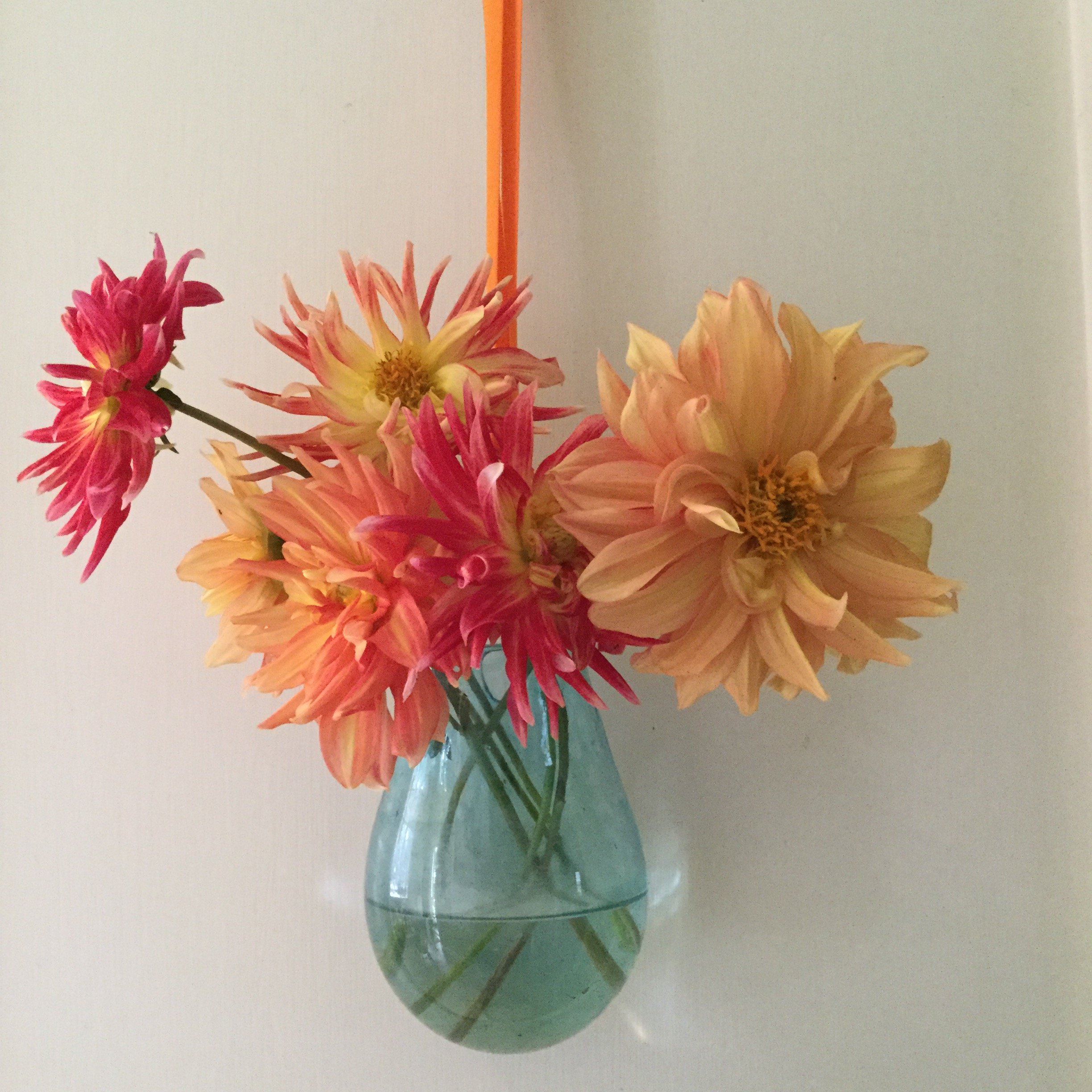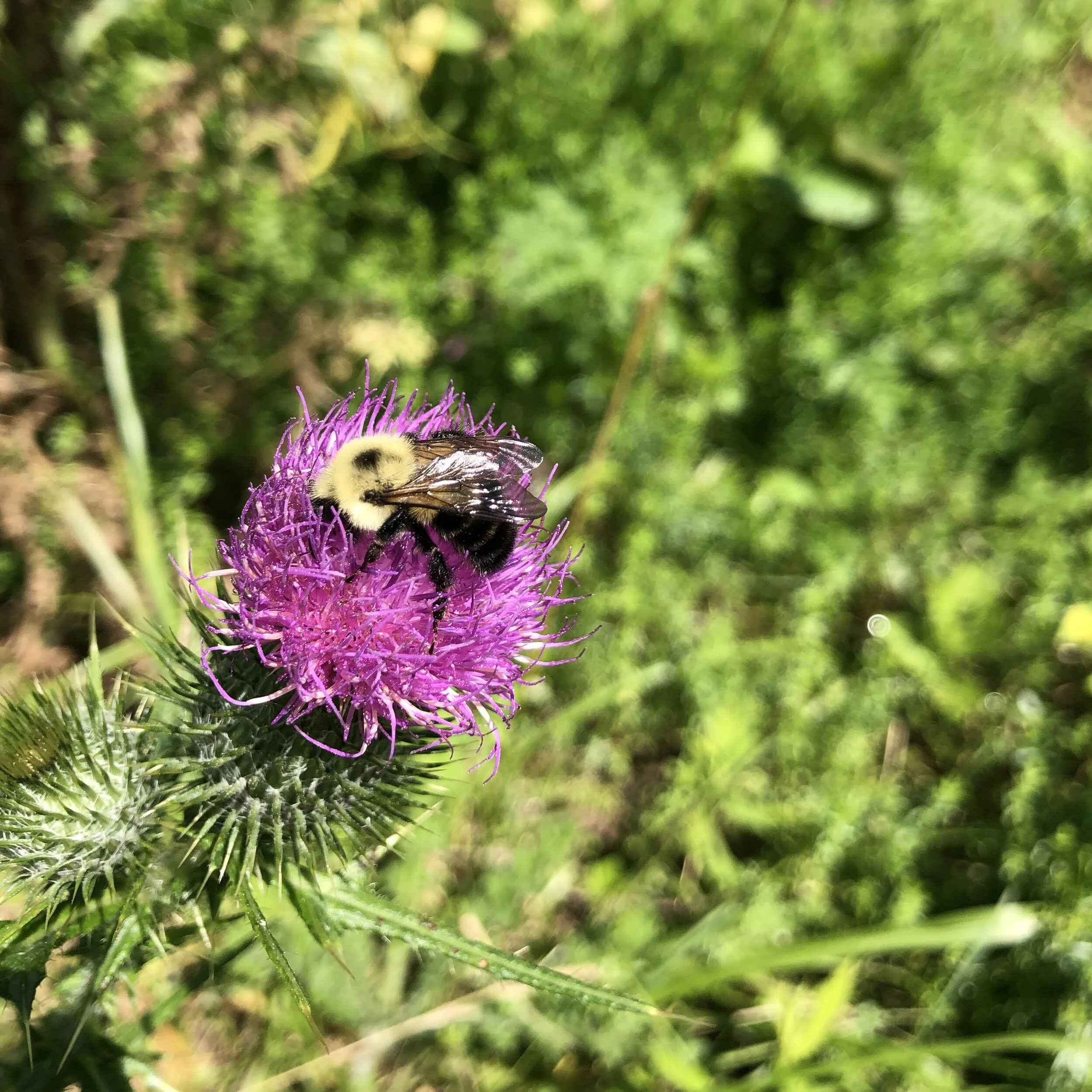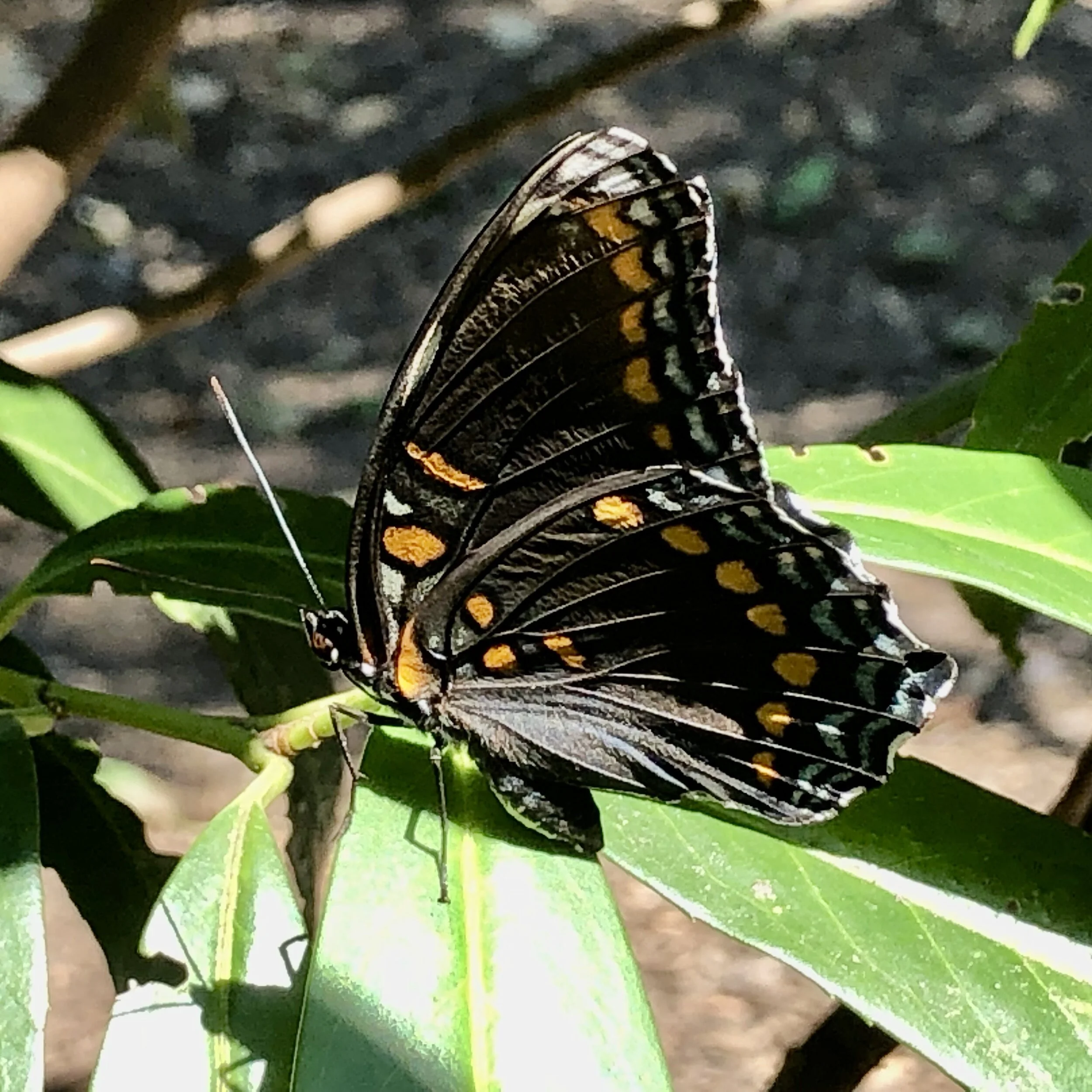Amazing Bees
Why keep bees? Well the more you know about bees and colony life the more amazing you will find them. They get most of their resources from flowers so as a result, the colony follows the life cycle of flowering plants. In spring they build up their work force by hatching babies. In the summer when flowers are most abundant they ramp up resource collection and are most active. In fall, they slow down as temps get cooler and flowers are less available. They kick out the drones, or males, at the end of the season so they don’t have to share honey over the winter, thus ensuring enough for the queen and her girls.
Why Keep Bees? - A Bee Pollinating A Flower In My Back Yard
The Hive
Hives have a single queen. She is larger. Her job is to lay eggs. A working hive can get up to 60,000 strong. If supplies are plentiful, the hive may swarm. Swarming is half the hive plus the queen leaving for a new home. They usually leave the hive, gather on a high branch or side of a building and form a bee ball. They send out scouts to look for a new place to live. While they are swarming, they are not dangerous, as they have no honey to protect. They will usually be gone in 2 days. The remaining bees grow a new queen by simply changing the position of the larva in a cell and feeding her royal jelly.
Why We Should Keep Bees
Bees will travel up to 2 miles away for pollen and nectar. In return for this, the flowers get pollinated. Bees, along with other pollinators pollinate more than 33% of the food we eat. They help all plants reproduce, not just food crops which is another great reason why keeping bees is so important. But bee populations are in danger. There is not one cause, but many. For bees, it is pesticide poisoning from local field crops and home gardens, a parasitic Varroa mite, the single-crop planting of most large farms now days, and climate change, which disrupts the timing between bees and bloom.
One way to help is to keep bees. Watching these amazing creatures is not only educational, but also humbling and rewarding. Honey is just a bonus (also wax, propolis, pollen and Royal jelly). Another way to help is to support local pollinator populations by by planting diverse plants in your garden, with flowers from early spring; silver maple and pussy willows, to late fall; asters and dahlias.
You can read more about my garden and the sustainable landscapes that I design by clicking the text links.
If you have any questions or comments to add, I would love to hear so please do so just below.
Carolle
Keep up-to-date with my garden and projects on Instagram



















